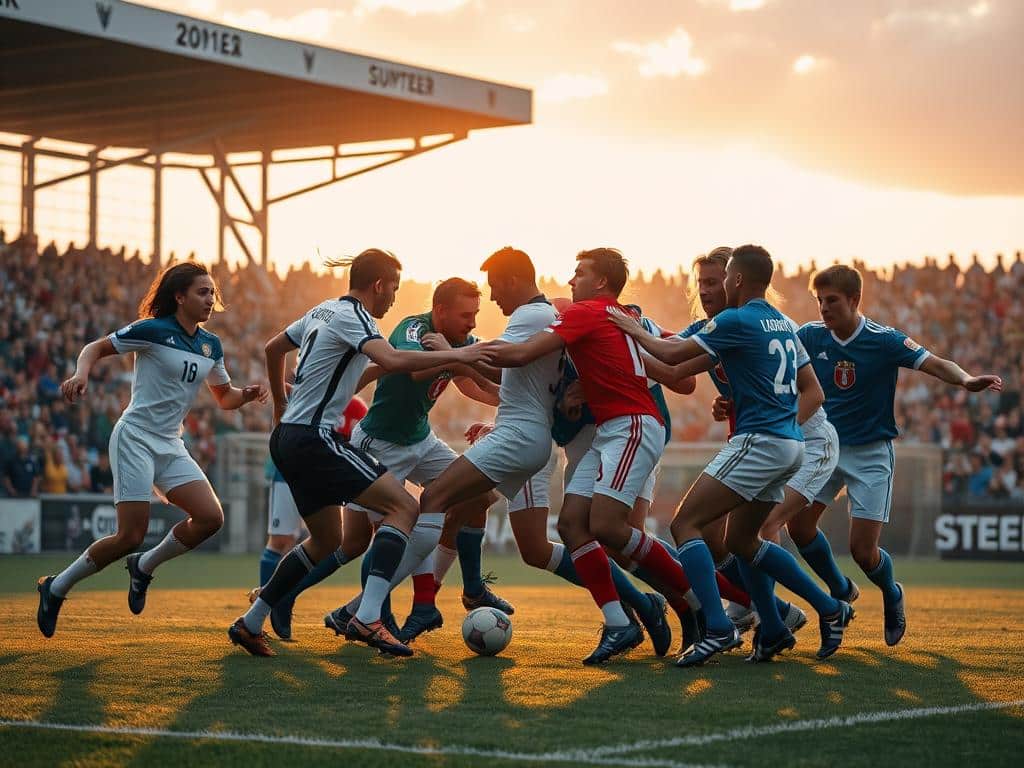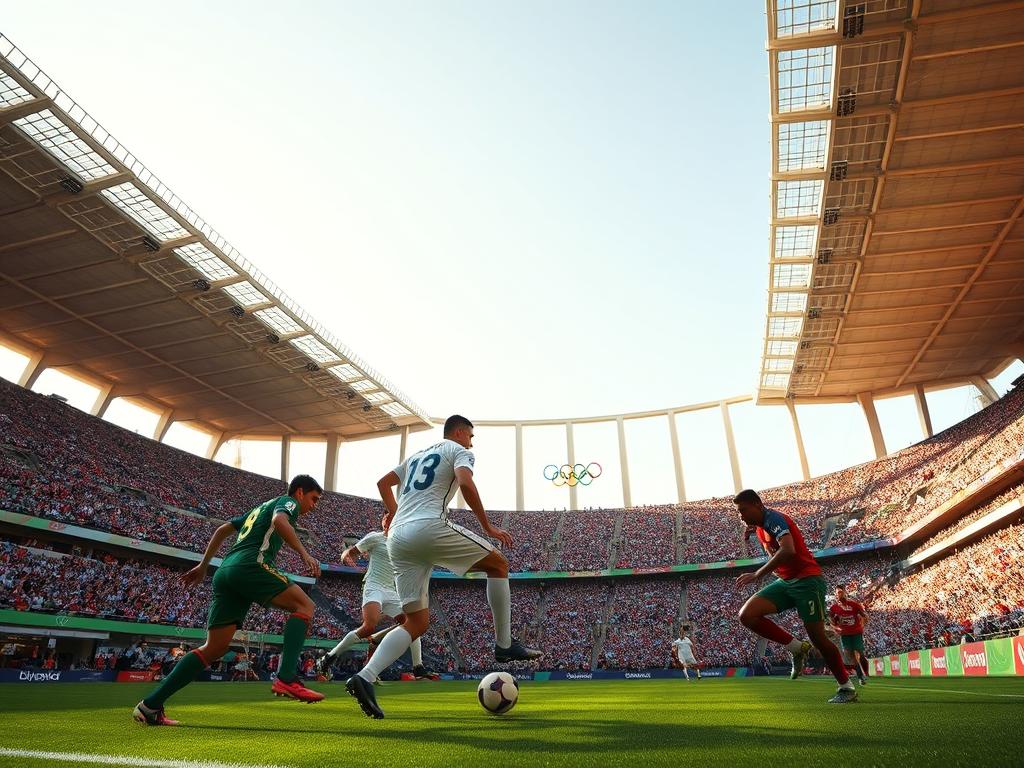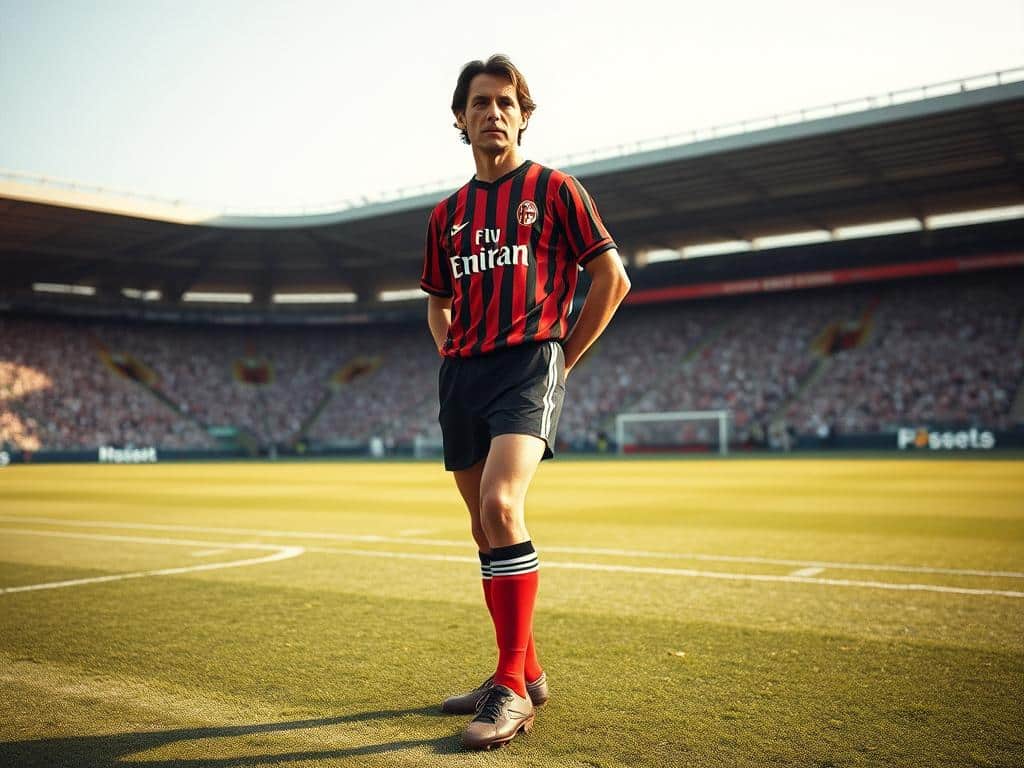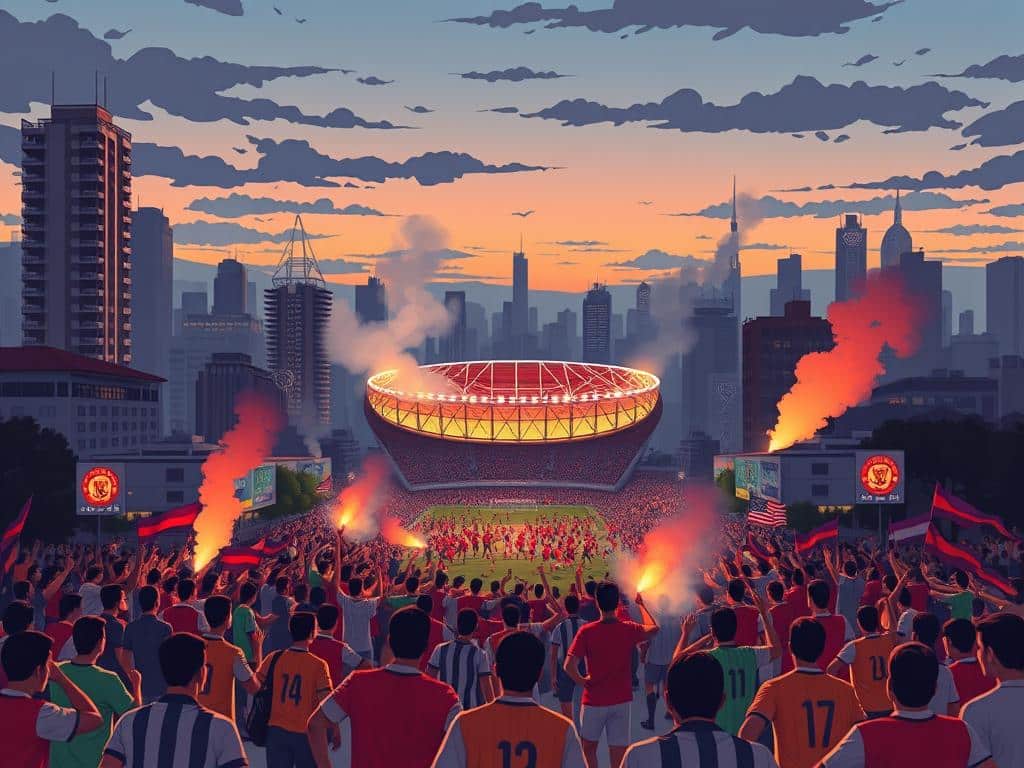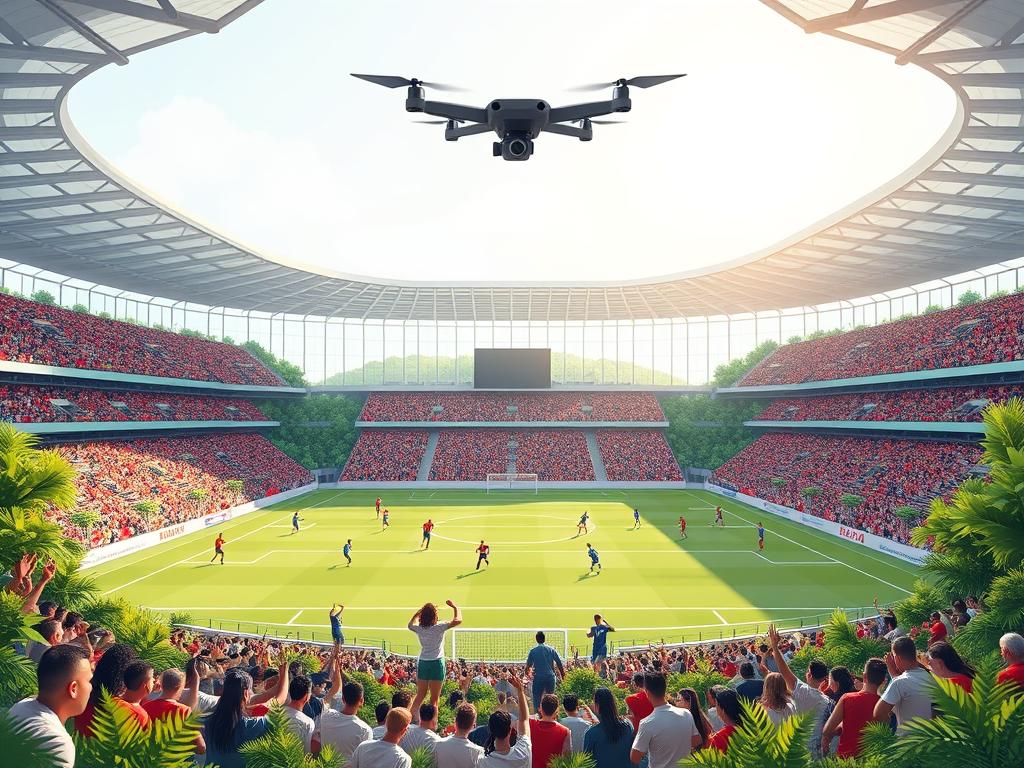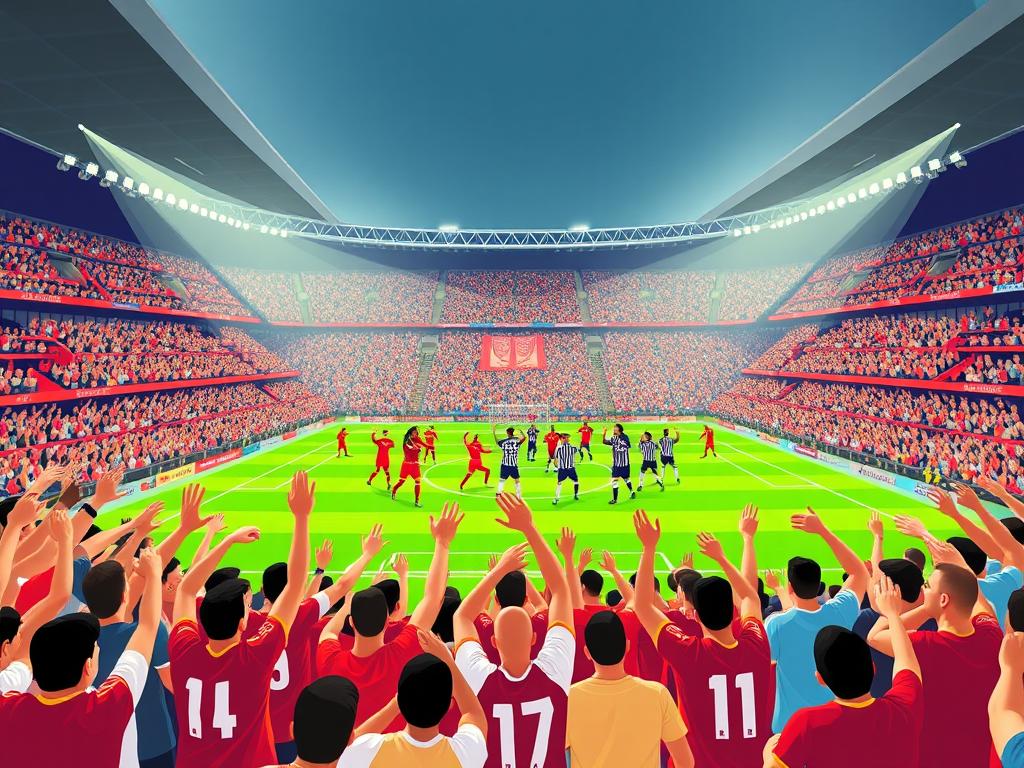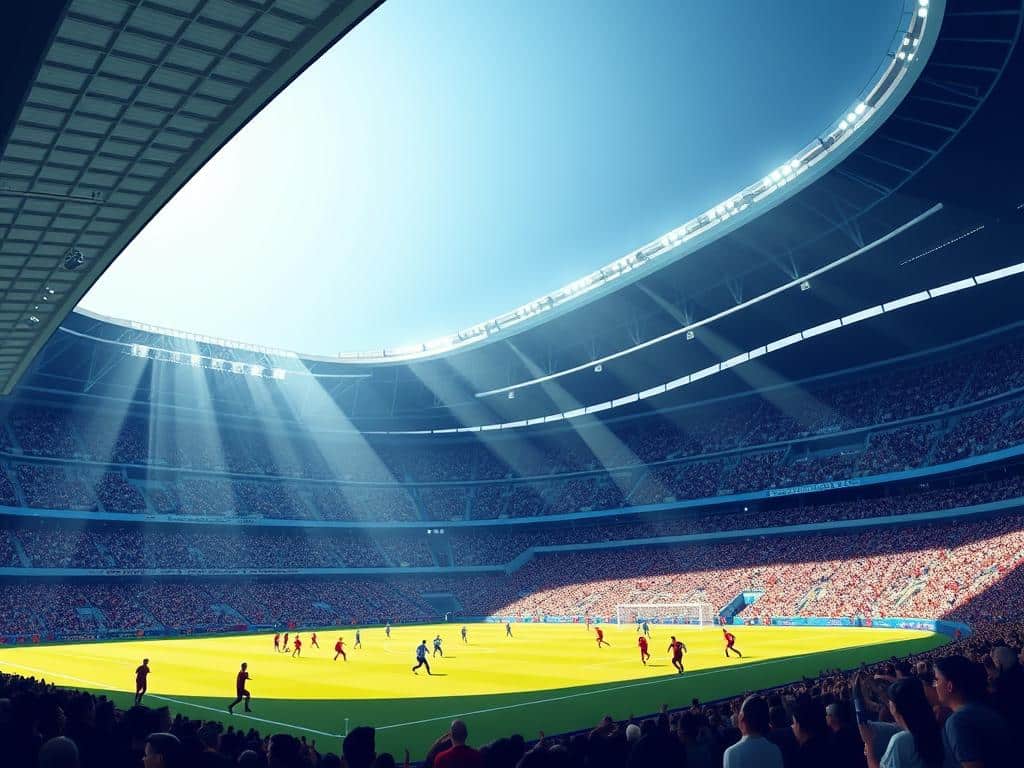Did you know that El Clásico, the match between Barcelona and Real Madrid, draws over 650 million viewers worldwide? This is just one example of how football rivalries captivate fans across the globe. These matches are more than just games; they are moments of passion, drama, and intense competition.
From the Old Firm Derby between Celtic and Rangers to the fierce Derby della Capitale in Rome, these clashes often reflect deeper social and cultural divides. Each encounter on the pitch tells a story of pride, history, and unforgettable moments.
In this article, we’ll explore some of the most legendary rivalries in football. Whether it’s the battle for a league title or a heated cup final, these matches have shaped the sport. Get ready to relive the excitement and discover what makes these rivalries truly special.
Setting the Stage: The Legacy of Soccer Rivalries
Every game tells a story, but some matches become legends. Football rivalries are more than just clashes on the pitch; they’re moments that define eras, ignite passions, and unite or divide communities. From the roar of the crowd to the intensity of the players, these encounters are unforgettable.
The Passion on the Pitch
What makes a rivalry so special? It’s the raw emotion that fans and players bring to the game. Whether it’s a local derby or a battle for a league title, the stakes are always high. The energy in stadiums like Anfield or San Siro is electric, turning every match into a spectacle.
Players like Diego Maradona have elevated these games to legendary status. Their skill and determination often decide the outcome, but it’s the passion of the fans that keeps the rivalry alive. From chants to banners, the support is unwavering.
A Brief Historical Overview
Football rivalries have deep roots, often tied to cultural or regional divides. Take the Derby della Capitale in Rome, where Lazio and Roma fans bring their city’s history to the pitch. These games are more than just football; they’re a reflection of identity and pride.
Over the years, rivalries have evolved. Modern battles in the Premier League or Champions League continue to captivate audiences. Yet, the essence remains the same: a fierce competition that transcends the sport itself.
From Boca Juniors vs. River Plate to Inter Milan vs. AC Milan, these encounters are etched in history. They remind us why we love the game and why these rivalries will always matter.
Exploring Notable Historical Soccer Rivalries
Football rivalries are more than just games; they’re cultural phenomena that unite and divide. These clashes on the pitch often reflect deeper social, political, and regional divides, making them unforgettable moments in the sport’s history.
What Makes a Rivalry Historic?
A truly historic rivalry is defined by three key elements: passion, persistent competition, and cultural significance. Matches like Manchester United vs. Liverpool or Boca Juniors vs. River Plate are more than just games; they’re battles for pride and identity.
These encounters often feature:
- Heated cup finals that decide championships.
- Dramatic moments that shift the balance in major tournaments.
- Iconic players like Diego Maradona, who elevate the game to legendary status.
Memorable Encounters Across Continents
From Europe to South America, rivalries have carved a niche in football history. The North West Derby between Manchester United and Liverpool is a prime example. With 39 league titles between them, every match is a clash of titans.
In South America, the Superclásico between Boca Juniors and River Plate is a battle of social classes. The 2018 Copa Libertadores final, moved to Madrid due to fan violence, showcased the intensity of this rivalry.
The Role of Clubs and Players
Clubs and players play a crucial role in elevating these matchups. Teams like Inter Milan and AC Milan have turned their city into a battleground for supremacy. Players like Maradona have become legends by delivering unforgettable performances in these high-stakes games.
These rivalries have also shaped the strategic evolution of the game. Managers like Pep Guardiola and Jürgen Klopp have pushed their teams to record-breaking seasons, adding new chapters to these storied encounters.
Football rivalries continue to captivate fans worldwide. Whether it’s a local derby or an international clash, these matches remind us why we love the game. They’re not just about the score; they’re about the stories, the passion, and the moments that define football history.
Cultural Significance and Regional Divides
Behind every great football rivalry lies a story of cultural significance and regional pride. These matches are more than just games; they’re reflections of identity, history, and passion. From religious divides to political tensions, rivalries often mirror deep-seated societal issues.

Political and Social Underpinnings
Football rivalries often serve as a stage for political and social narratives. Take the Old Firm Derby between Celtic and Rangers. This clash isn’t just about football; it’s a representation of religious and cultural divides in Scotland. Similarly, El Clásico between Barcelona and Real Madrid reflects the tension between Catalan and Spanish identities.
These encounters are more than just matches. They’re moments where history and politics collide on the pitch. Fans bring their beliefs and pride to the stadium, turning every game into a cultural event.
Identity and Community Impact
Football rivalries also play a significant role in shaping community identity. For example, the Derby della Capitale between Lazio and Roma is a battle for supremacy in Rome. It’s not just about winning; it’s about representing your side of the city.
These matches unite communities while also dividing them. The pride of local traditions and the passion of fans create an atmosphere that’s unmatched. Whether it’s a league title or a cup final, the stakes are always high.
Football rivalries remind us that the game is more than just goals and victories. It’s about the stories, the history, and the moments that define us.
Unforgettable Matches and Turning Points
Some matches are etched in history, not just for the scoreline, but for the unforgettable moments they create. These encounters often define eras, shift the balance of power, and leave fans talking for decades. From last-minute goals to dramatic comebacks, these moments are what make football so thrilling.
Key Historical Encounters
One of the most iconic matches in football history is the 1974 World Cup final. West Germany faced the Netherlands in a clash that was more than just a game. It was a battle of styles and philosophies. West Germany’s victory marked a turning point in football history, showcasing the importance of tactical discipline.
Another unforgettable encounter was the 2005 Champions League Final. Liverpool, trailing 3-0 at halftime, staged a miraculous comeback to level the score and eventually win on penalties. This match is often referred to as the “Miracle of Istanbul,” a testament to the never-say-die spirit of the game.
Dramatic Moments and Rivalry Clashes
Football is full of heart-stopping moments that define rivalries. The 1999 Champions League Final saw Manchester United score twice in stoppage time to snatch victory from Bayern Munich. This dramatic win cemented their place in football folklore.
Here are some other unforgettable moments:
- The 2017 Champions League comeback by Barcelona, where they overturned a 4-0 deficit to win 6-1 against PSG.
- The 2012 Premier League finale, where Manchester City scored two goals in stoppage time to clinch their first league title in decades.
- The 1986 World Cup quarter-final, where Diego Maradona’s “Hand of God” goal and his stunning solo effort led Argentina to victory over England.
These moments remind us why we love the game. They’re not just about the result; they’re about the passion, the drama, and the stories that unfold on the pitch.
Legends Behind the Rivalries
Behind every iconic clash, there’s a story of players and coaches who made history. These legends turned matches into unforgettable spectacles, leaving a lasting impact on the game. From individual brilliance to tactical genius, their contributions shaped the rivalries we celebrate today.
Iconic Players and Their Stories
Diego Maradona is a name that resonates with football fans worldwide. His performance in the 1986 World Cup, especially the “Hand of God” goal and the “Goal of the Century,” cemented his legacy. These moments not only defined his career but also intensified the rivalry between Argentina and England.
Another legend is Zinedine Zidane, whose stunning volley in the 2002 Champions League final secured victory for Real Madrid. His skill and composure in high-stakes matches made him a symbol of excellence. Players like these elevate rivalries to legendary status.
Influential Coaches and Strategies
Coaches play a crucial role in shaping rivalries. Pep Guardiola’s tiki-taka style revolutionized football, leading Barcelona to dominate their matches against Real Madrid. His tactical brilliance turned El Clásico into a clash of philosophies.
Jürgen Klopp’s high-pressing strategy brought Liverpool back to the forefront of the Premier League. His battles with Guardiola’s Manchester City have added a new chapter to the league’s history. These coaches not only win titles but also redefine how the game is played.
From players to coaches, these icons have become symbols of passion and perseverance. Their stories keep the fire of historic rivalries burning bright, inspiring fans across generations.
Listicle Highlights: Rivalries that Shaped the Game
From packed stadiums to unforgettable goals, football rivalries have shaped the sport in ways that go beyond the pitch. These clashes are more than just games; they’re battles that define eras and inspire generations. Let’s dive into some of the most epic showdowns from Europe, South America, and beyond.

Epic Showdowns from Europe, South America, and Beyond
Football rivalries are a global phenomenon, each with its own unique story. Here are some of the most influential encounters that have left a lasting impact:
- Manchester Derby: This clash between Manchester United and Manchester City is one of the most heated in the Premier League. With both teams vying for dominance, every match is a high-stakes battle.
- Superclásico: Boca Juniors vs. River Plate is more than just a game; it’s a cultural event. This South American rivalry divides Buenos Aires and showcases the passion of football fans.
- Derby della Capitale: Lazio and Roma’s rivalry is deeply rooted in the history of Rome. Every match is a fight for city pride, making it one of the most intense encounters in football history.
- El Clásico: Barcelona vs. Real Madrid is a clash of titans. With stars like Diego Maradona and Lionel Messi, this rivalry has produced some of the most memorable moments in the sport.
- Tyne-Wear Derby: Newcastle United vs. Sunderland is a regional rivalry filled with passion and drama. The fans bring an unmatched energy to every encounter.
These rivalries have not only shaped the game but also influenced club strategies and tournament outcomes. Whether it’s a league title or a cup final, the stakes are always high. These matches remind us why we love football and why these rivalries will always matter.
Historical Context and Evolution of Rivalries
Over the years, football rivalries have evolved, shaped by major tournaments and cultural shifts. These changes have not only influenced the game but also deepened the passion of fans worldwide. From the early days of local derbies to today’s global spectacles, the dynamics of these clashes continue to transform.
Impact of Major Tournaments
Major tournaments like the World Cup and Champions League have provided the stage for some of the most dramatic rivalry clashes. For example, the 1974 World Cup final between West Germany and the Netherlands was more than just a game. It was a battle of styles that marked a turning point in football history.
These tournaments often amplify the stakes, turning every match into a high-pressure encounter. The 2005 Champions League final, where Liverpool staged a miraculous comeback, is a testament to how these moments define rivalries and create unforgettable memories.
Changing Dynamics Over Time
External factors like new regulations, globalization, and technological advances have also shifted the dynamics of rivalries. Tactics have evolved, player roles have changed, and fan interactions have become more global. For instance, the rise of social media has allowed fans to engage with their teams in new ways, adding another layer to the rivalry experience.
Historical changes have also influenced team fortunes. The 1998 World Cup, where France defeated Italy on penalties, showcased how tournament moments can alter the trajectory of a rivalry. These shifts remind us that football is constantly evolving, blending past glory with modern trends.
From the pitch to the stands, the essence of a rivalry remains the same: a fierce competition that captivates fans and defines the sport. As we look back at these historical moments, we gain a deeper appreciation for the game’s enduring legacy.
Notable Historical Soccer Rivalries and the Fans’ Perspective
The roar of the crowd, the sea of colors, and the chants echoing through the stadium—these are the moments that define football rivalries. While the players battle on the pitch, it’s the fans who bring the heart and soul to these encounters. Their passion turns a simple match into a cultural phenomenon.
The Role of Fan Culture and Tradition
Fan culture is the lifeblood of any great rivalry. From the chants that echo through the stands to the banners that wave proudly, supporters create an atmosphere that’s unmatched. Take the Merseyside Derby between Liverpool and Everton. Fans on both sides bring decades of tradition, turning every game into a celebration of local pride.
In South America, the Superclásico between Boca Juniors and River Plate is a prime example. The energy in La Bombonera stadium is electric, with fans singing and dancing from start to finish. These rituals, passed down through generations, make the match more than just a game—it’s a cultural event.
Here’s how fans elevate these rivalries:
- Chants and Songs: Unique anthems that unite supporters and intimidate rivals.
- Matchday Rituals: Pre-game traditions that build excitement and camaraderie.
- Local Pride: A deep connection to their club and community.
Fans also play a crucial role in the outcome of key matches. Their unwavering support can inspire players to push beyond their limits. For instance, Liverpool’s miraculous comeback in the 2005 Champions League final was fueled by the deafening cheers of their supporters.
Ultimately, fan culture is as integral to these rivalries as the players and tactics on the pitch. It’s a timeless connection that reminds us why we love the game.
Final Thoughts on Soccer’s Enduring Battles
Football’s greatest rivalries are more than just matches; they’re stories of passion, pride, and perseverance. From El Clásico to the Superclásico, these clashes have shaped the sport and inspired generations of fans. They remind us why we love the game.
These battles are not just about wins or losses. They’re about the moments that define a club’s identity and the resilience of its supporters. Whether it’s a local derby or an international showdown, the energy and emotion are unmatched.
As the game evolves, new rivalries emerge, adding fresh chapters to football’s rich history. Yet, the essence remains the same: a fierce competition that unites and divides in equal measure.
Celebrate these unforgettable moments and share your own stories. After all, it’s the fans who keep the spirit of these rivalries alive.

